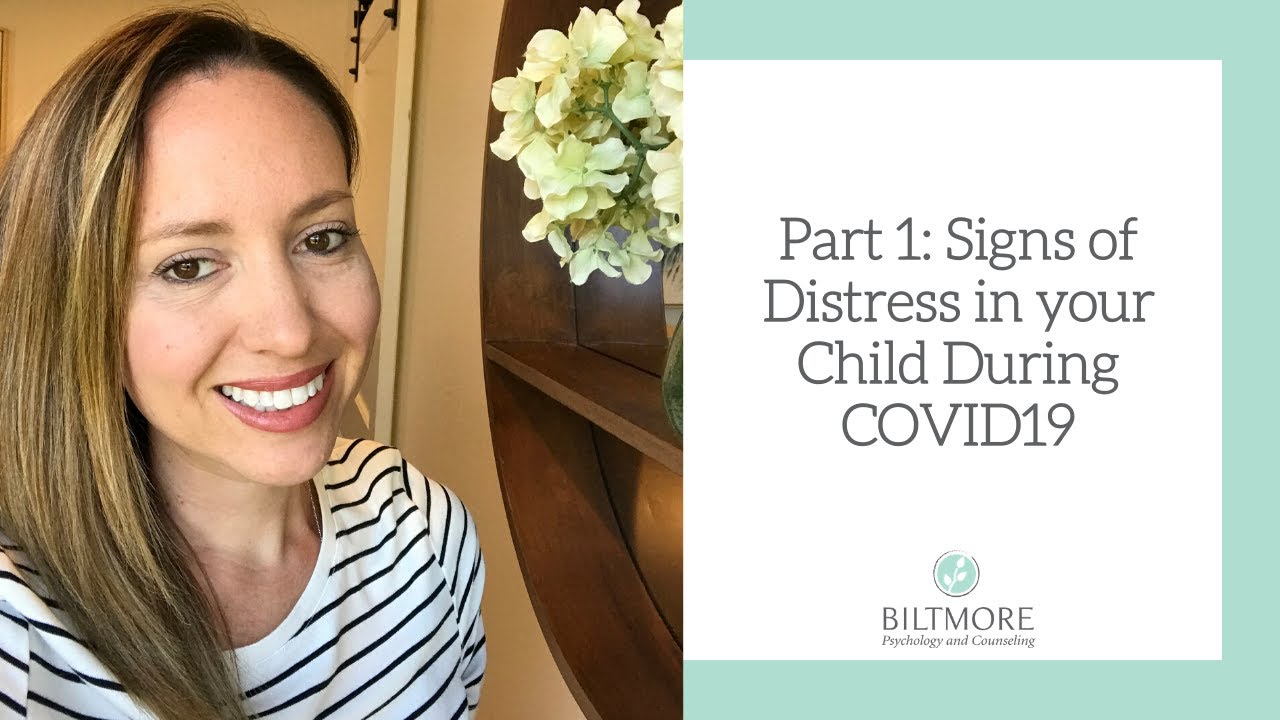For all the parents out there that have their kids at home and are worried that their child may be experiencing distress, we understand your concern!
Most families are worried that this pandemic is going to create anxiety in their children. We recognize how perceptive they are and how quickly their world’s have changed. Solutions like limiting their exposure to the news or avoiding conversations about death tolls may reduce the likelihood that our children will become anxious or depressed. Yet, many of us still worry that this historical event could leave a permanent mark on our children. Or at the very least, we worry that it will cause temporary concern.
In times like these, it is hard to know what to look for. What does childhood distress look like? Do they look like stressed adults or do they present distress in a different way?
Adults have a greater capacity to identify and express their feelings. Our ability to have metacognition and think about our thoughts gives us much more insight into our emotions and what may be triggering anxiety.
But for children, many of them have not yet developed this skill. They are not behind nor are they immature for their development. They simply have not yet developed the capacity to think about their thoughts or express their true sense of worry. As a result, their distress comes out in different ways.
Now, big disclaimer: For all the worried parents out there, identifying distress in your child should not prompt an immediate freak out. Your child will not be forever damaged or have lifelong anxiety.
Here are 7 Signs of Distress in Children:
1. Acting Out: We’ve all seen it, our sweet and loving child suddenly starts engaging in hourly temper tantrums and wages an all out war against everyone in the family. In these times, our automatic reaction may be to crack down on these behaviors. And I get it. These behaviors are not necessarily “acceptable.” But when you notice a sudden shift in your child’s behavior, it’s important to first consider that this may be a warning sign for underlying distress.
2. Clinging Behaviors: Asking for hugs and affection is a very healthy and normal behavior in children (and adults). However, when the healthy levels of affection transform into a need for constant connection, or extreme distress when apart, this may be a sign of underlying anxiety.
3. Asking for Verbal Reassurance: A child’s biggest fear is often that of losing their parent. They may begin to ask questions like “What’s going on?”, “Is that person going to die?”, “Are you going to die?”. Expressing more frequent fears and asking for more verbal reassurance may be their way of responding to great stressors or changes in their life.
4. Rigidity and Lack of Flexibility: Every child likes to have a level of control and autonomy in their life. But when these needs become extreme or the child struggles to allow others to make these decisions for them, this can indicate a greater need for control in a world that feels out of control.
5. Mood Swings: Children that are in distress may have more extreme shifts in their moods. Mood swings to a certain degree are very common. However, when it feels that your child is often living in the more extreme ends of happiness, sadness, excitement, and sadness, it may indicate that they are overstimulated by the stress they are under.
6. Difficulty Falling Asleep and Staying Asleep: Occasional changes in sleep patterns are normal in children. However, when these changes seem to persist beyond a week or more, this might raise a bit of concern. Difficulty falling asleep can be driven by anxiety or a worry that they can’t be “turned off.” Similarly, when children have a hard time staying asleep or wake up in the middle of the night, this may be driven by more dysphoric moods.
7. General Regression: Children that have been potty trained for many months may regress into bed wetting. Old habits to self sooth may return such as thumb sucking or needing to sleep close to the parent. These regressions are not permanent, but will often resurface during times of stress.
Children are resilient and having a loving parent is key to helping them overcome this distress. So if you see some of these behaviors in your child, do not immediately go into mom/dad shame. Instead, recognize that you love your kid enough to take the time to educate yourself on this distress and are willing to do what it takes to make sure that they are healthy and whole.
Good luck out there parents! I know many of us need it. But don’t forget, we will get through this time and so will our children!



